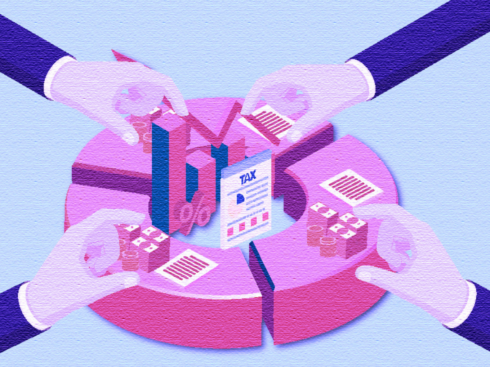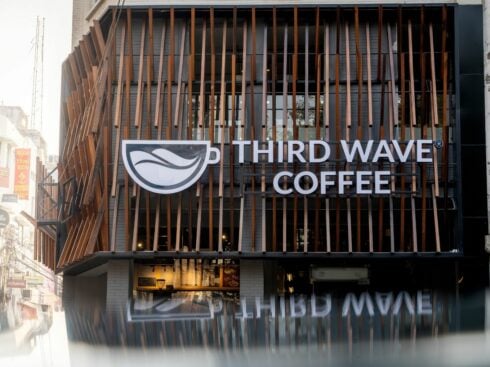SUMMARY
Ola acquired Foodpanda in 2017 but has scaled down the product this year
Ola Foods launched Khichdi Experiment as its first cloud kitchen product
Pranay Jivrajka is leading Ola Foods plans
“The good part about being a late entrant in this industry is there’s a lot of learning that the industry has already got” — Pranay Jivrajka, CEO, Ola Foods
Has Ola arrived late though? The Bengaluru-headquartered company has not exactly made its plans to venture beyond cab-hailing a secret. It’s acquisition of Foodpanda was seen as a first step towards a diversified approach, and this week, the company solidified its foodtech strategy with the announcement of Ola Foods Khichdi Experiment and other upcoming food brands.
With Amazon making its food delivery and cloud kitchen debut in India this year, and with Zomato and Swiggy under increasing pressure to change their discount-happy ways, there may not be a better time to enter the foodtech race.
And Ola is betting on cloud kitchens with a twist of the omnichannel model, that all major ecommerce players are building towards.
Ola Foods is being led by former Foodpanda India CEO Pranay Jivrajka, who is also a founding partner at Ola, and speaking to Inc42, Jivrajka said that Ola Foods’ first brand and the idea for the model has been refined over the last 7-8 months of experimenting.
Ola’s food business is now focussed on building a portfolio of own food brands and curated food offerings through cloud kitchens. Ola Foods has a network of 50 kitchens in Bengaluru, Hyderabad, Mumbai, Pune, Delhi NCR and Chennai To begin with, the company launched the Khichdi Experiment in Bengaluru. Khichdi Experiment will offer a carefully curated assortment of khichdi (a staple rice dish) in as many as 16 flavours. Along with a delivery service, the company has also launched a store in Bengaluru.

Will Ola Get Foodtech Right This Time?
Ola’s interest in food delivery space began with its first attempt ‘Ola Cafe’, which was shut down in March 2016. The company then acquired Foodpanda India business in December 2017 for $31.7 Mn (reportedly) to venture into the food delivery business.
This year, Foodpanda has been under fire with its decreasing orders and increasing cash burn.
“As Ola is known for doing multiple experiments, few of them work and some don’t. We also tried Ola Cafe 3-4 years back, rolled back, then acquired Foodpanda and started doing food delivery. We even scaled up aggressively to get up to 25% market share and now we are at this stage,” Jivrajka told us.
He said that the omnichannel approach enables good food experiences and allows brands to sell through multiple channels such as Foodpanda, Zomato and Swiggy.
The much-touted omnichannel approach not only includes stores such as the one in Bengaluru, but also popup locations, food trucks, kiosks and more formats. Jivrajka says Ola is not ruling out any format, and wants to take the simple approach of being where customers are.
“This includes consistent good food being prepared across different formats offered to consumers at their convenience. This means that there is room for every channel, there is room for every distribution mode.”
With two food trucks for Khichdi Experiment already, the company says that it is also exploring branding opportunities across multiple events. “It [food trucks] has a small setup cost. It gives you a consistent experience and can optimise between times of days of week and give you a good business and a good revenue,” he added.
He further explained that kiosks are a very clear business opportunity in public places, whereas popup stores would cater to corporate lunch demand and for events.
With its learnings, as Jivrajka mentioned earlier, Ola Foods was able to firm-up a strategy or roadmap for expansion too. “We’re leveraging how the market has turned out and we’re focused on the larger geographies and larger micro markets first,” the CEO said about Ola Foods launching in Tier 1, 2 and 3 cities which have an established addressable base.
The challenge, according to Jivrajka, is identifying the right size of operations the right network for every city. Starting with one or two brands this quarter, Ola is looking to add a couple of more food brands in the next quarter. “The idea is to reach 80-90 kitchens by the end of this year, as there is enough and more scope across tier 1, tier 2 and 3 cities,” he explained.

It Is Not A Winner-Take-All Food Space: Pranay Jivrajka
“The way I see the industry it has three key parts: making good food and food brands, enabling discovery and third is fulfillment.”
Even if the food is not consumed at point-of-sale as is the case with cloud kitchens, the fulfilment is key for new-age food brands. Jivrajka said that Ola Foods is focussing on the first part — good food and food brands — to start with. With the existing Foodpanda delivery and distribution network, the focus has shifted from delivery to quality of food.
“The way we see this is that there is a clear gap and on the supply side, a good food brand, which people can rely on and that is what we are betting right now.”
As per DataLabs by Inc42, the projected market size of cloud kitchens is expected to reach $1.05 Bn by 2023. Despite the growth opportunity, the biggest challenge for pure-play cloud kitchens such as Rebel Foods or Freshmenu is the fact that the model is entirely dependent on food aggregators and delivery services. For aggregator businesses, the cost of servicing cloud kitchens needs to keep rising to meet break-even levels. And once the platform cost goes up, cloud kitchens will see reduced margins in the future.
Secondly, cloud kitchens suffer from issues such as not being able to build customer loyalty or create a formidable brand since they don’t directly deal with consumers. Finally, there is also the issue of costs going up in the long run depending on the associated costs for food delivery services and tech platforms.
However, Jivrajka insisted that cloud kitchens are a viable business model with a lot of positives for businesses, including the well-cited economies of scale, pointing out the lower real estate cost, lower maintenance overheads and more.
The analysis from DataLabs by Inc42 noted despite these benefits, customer acquisitions are driven by discounting largely, which means there’s a high acquisition cost, which is often passed on by food delivery platforms to the cloud kitchen.
Jivrajka acknowledged the challenges around cloud kitchen model for Ola Foods including the lack of direct feedback from the consumers and indirect brand awareness, but circled back to the opportunity ahead, even in the urban context, with the company looking at 75 to 80% penetration through different formats across cities.
“You can scale it [Ola Foods’ approach] up faster in terms of no investments, lower time in terms of getting your footprint and making your food available to consumers in a locality. There’s an opportunity to further optimise and take a multi-brand approach.”



























